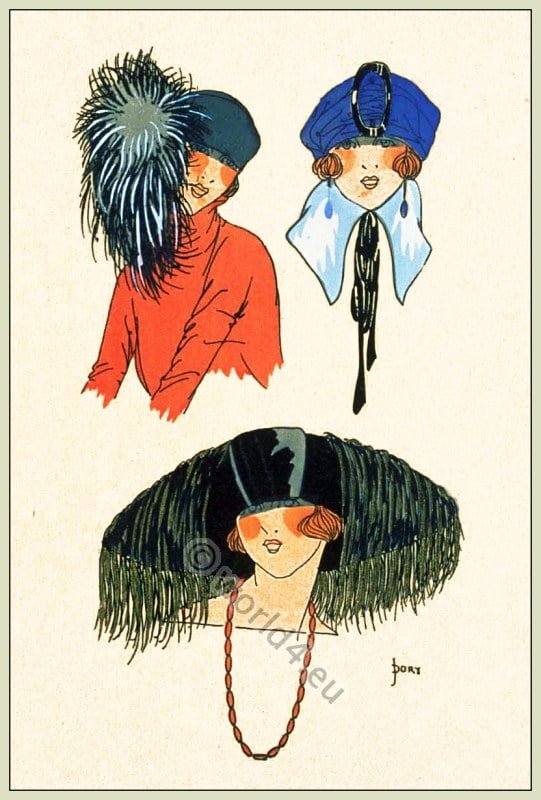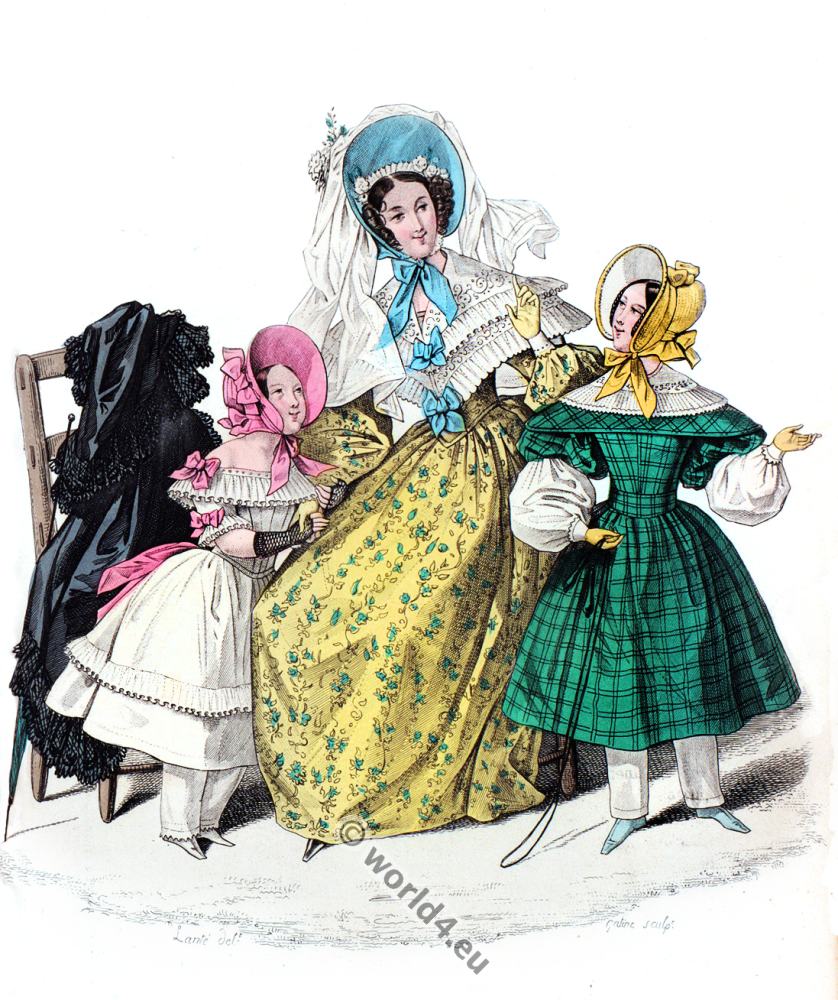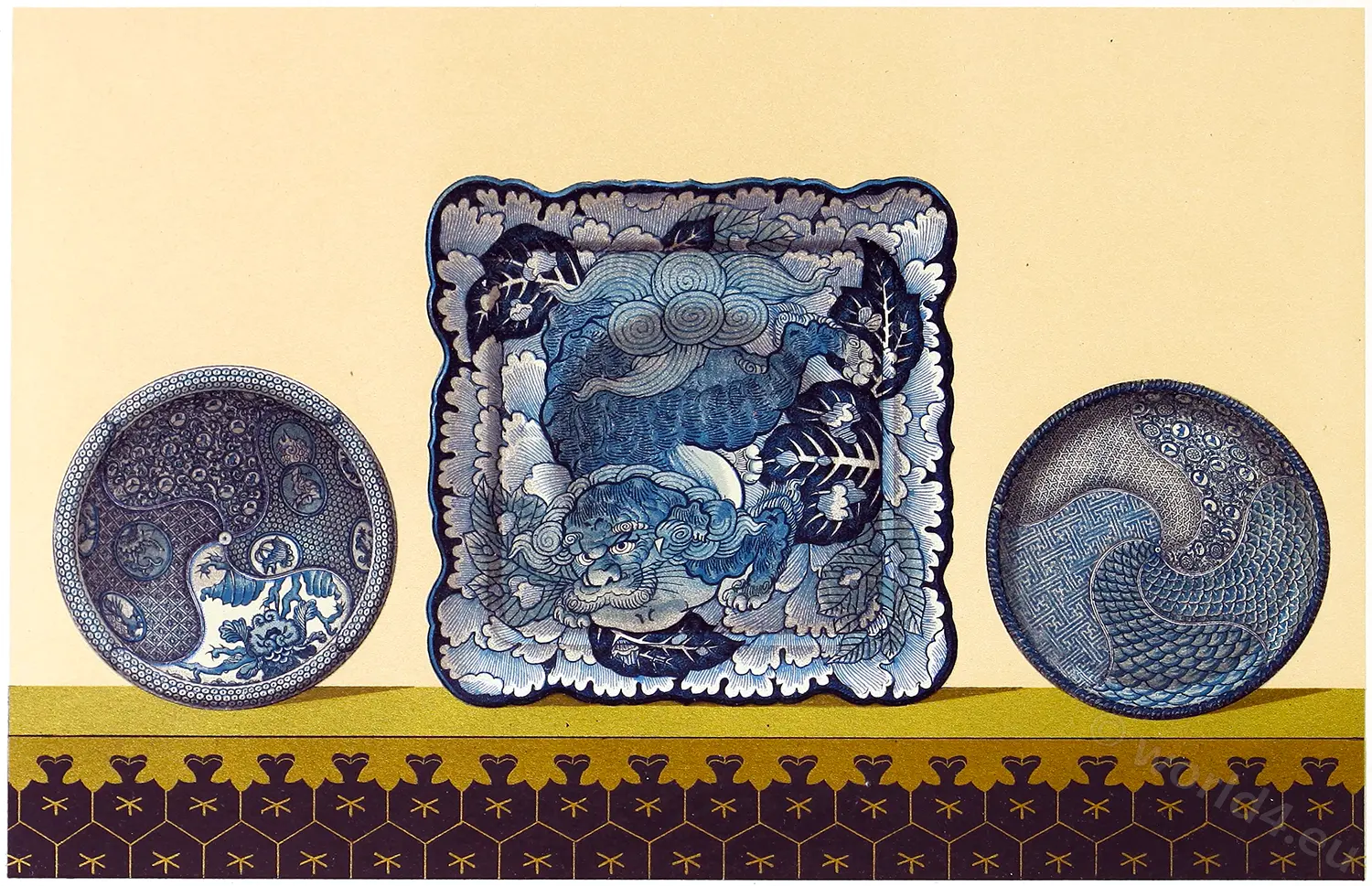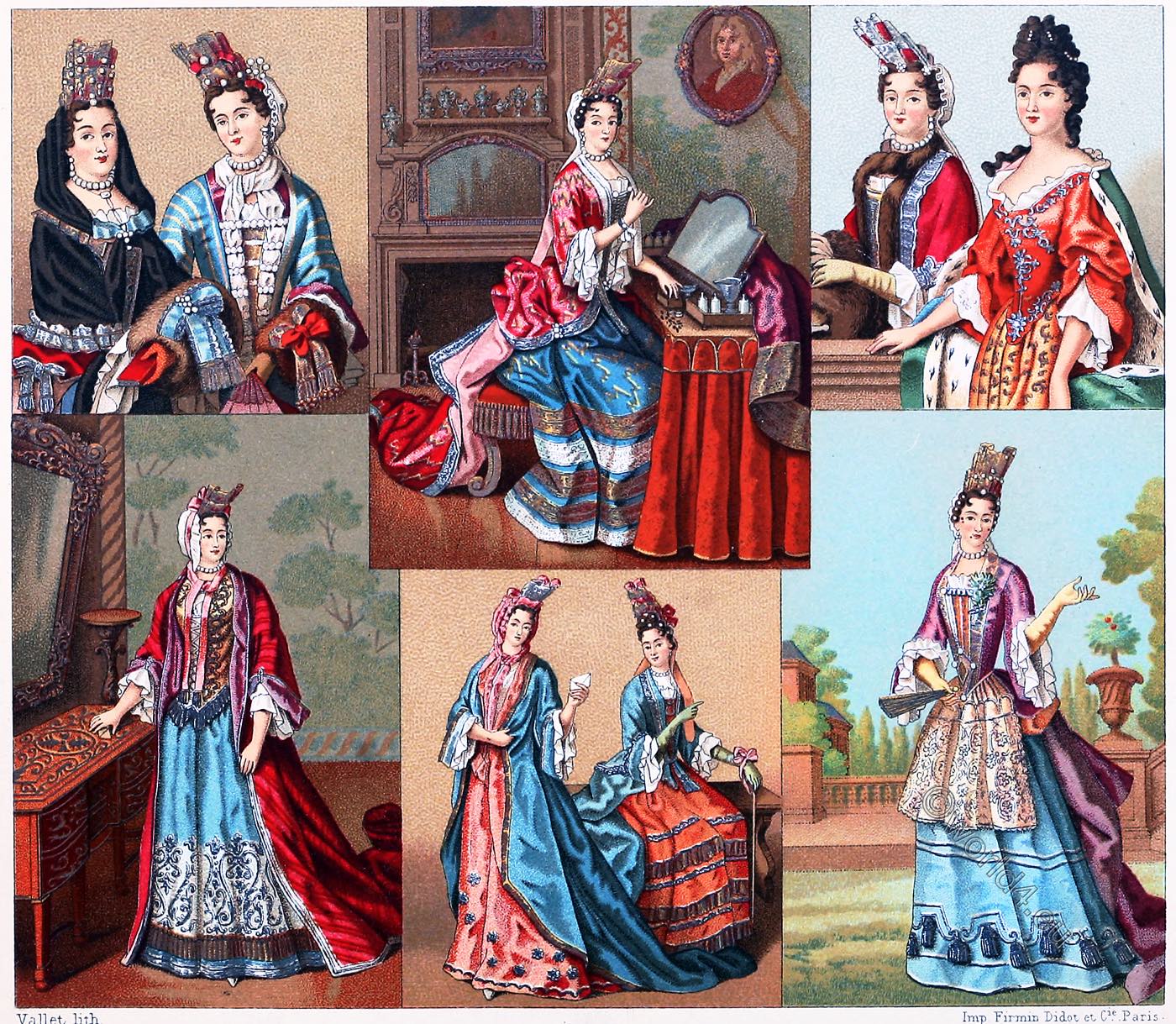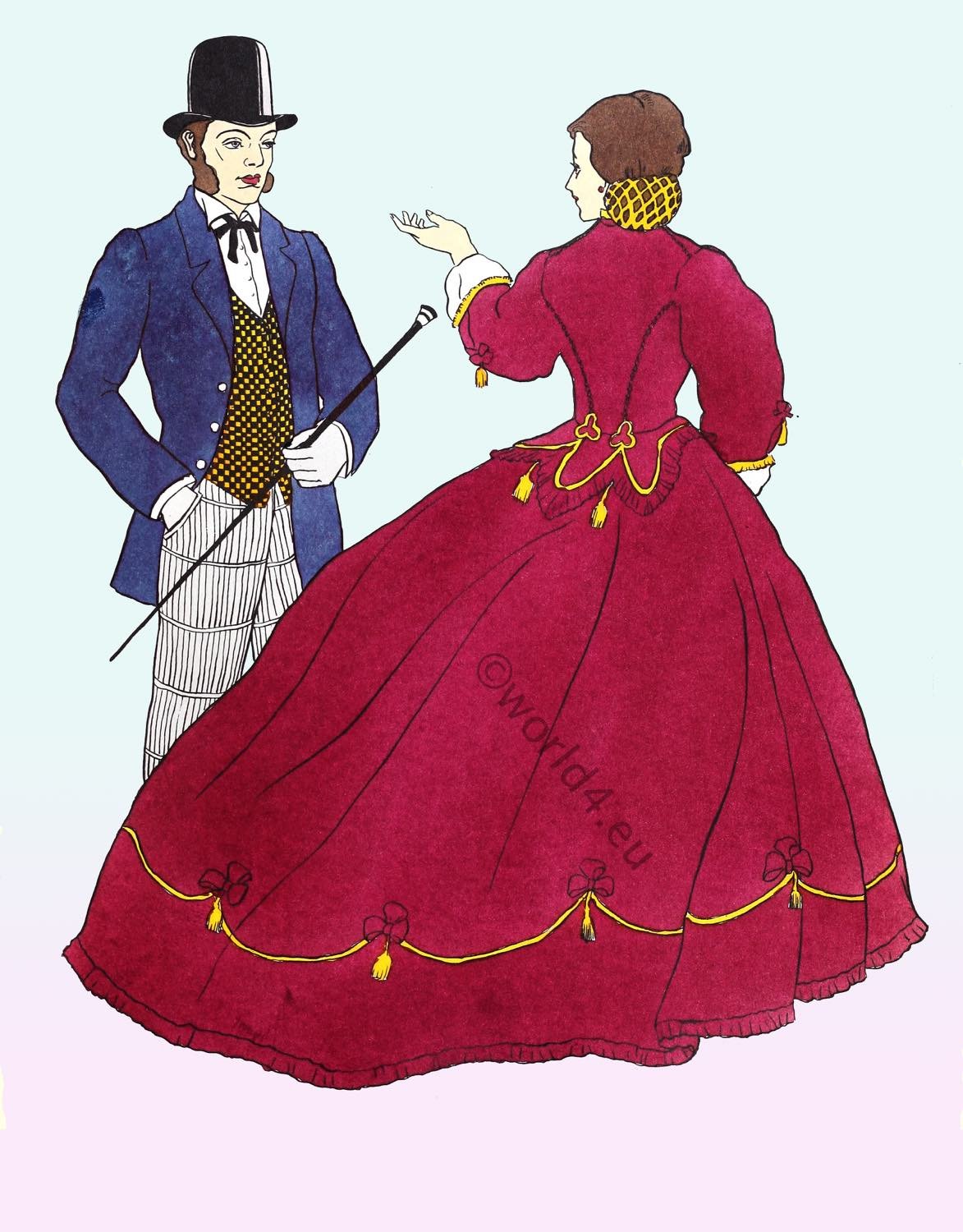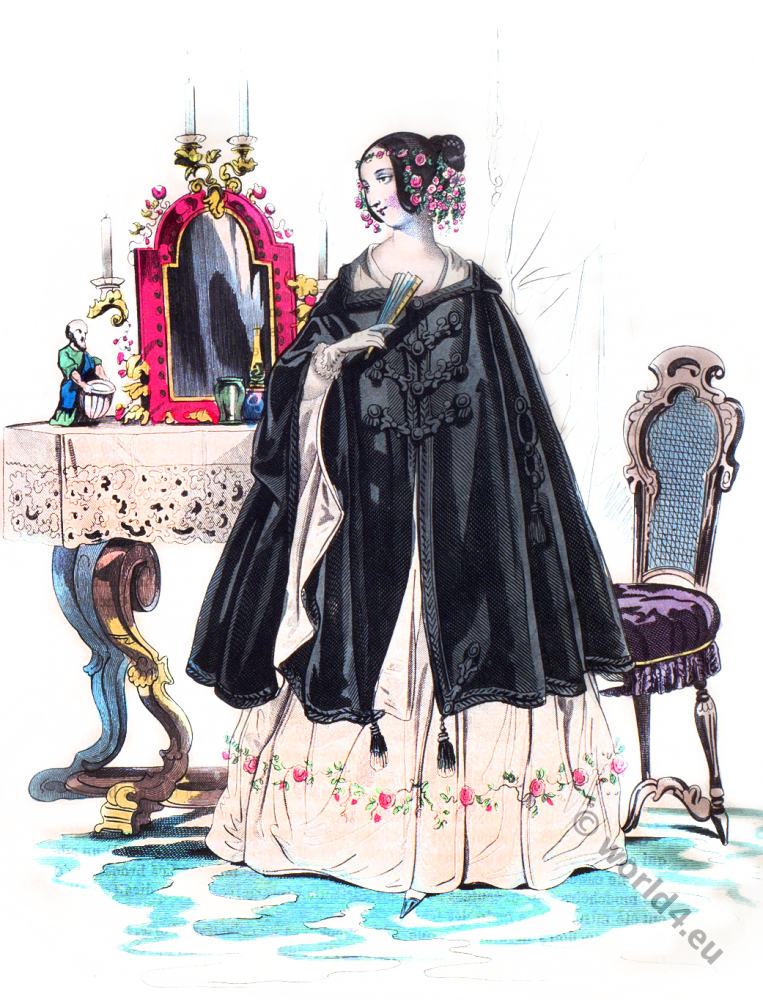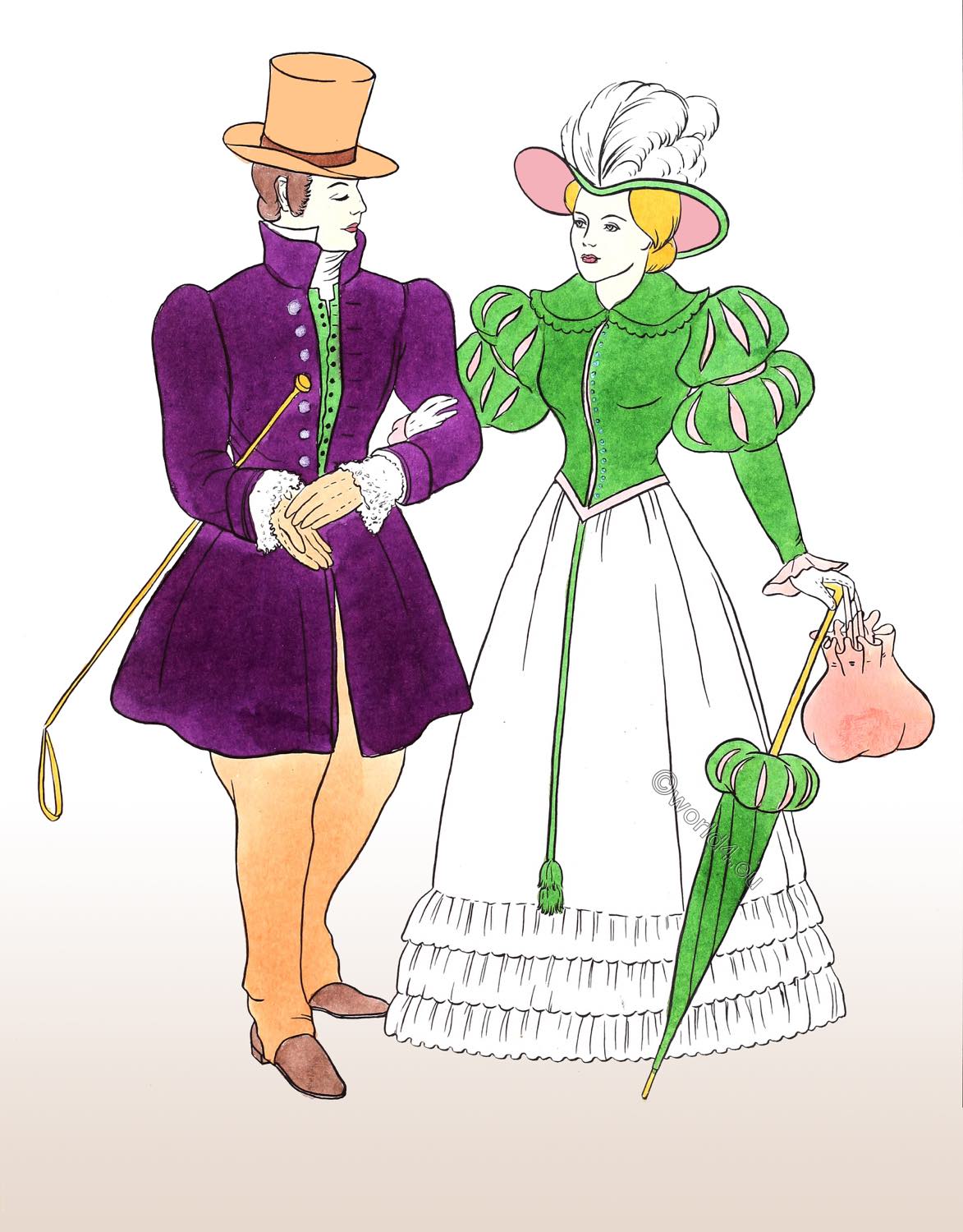
EMPIRE-ROMANTIC. 1800-1840.
Typical riding habit and a young lady presents a splendid example of the late 1820’s fashion.
PLATE NO. 93
Pictured here is a gentleman, either English or French, dressed in a typical riding habit of the early 19th century. He lived in the late 1820’s.
His hat is slightly bell-shaped, has a curled, comparatively wide brim, and is worn well forward on the head. It is made of beaver, as were most top hats. His hair is worn in the favorite “dog ear” fashion, that is, brushed forward on the forehead and temples. The high, pointed collar can be seen sticking out over the simple cravat, much favored for riding. The one shown hero has been shaped and stiffened and has no ends visible.
The coat is a riding form of the new frock coat. With the exception of the collar, which is the common straight military type, and the scantier skirt, the riding frock coat is no different from the ordinary type.
Like the coat of the 18th century, the frock coat is skirted. The model shown here is
single-breasted, although double-breasted types were worn. The sleeves are of normal length, finished with a small cuff. At that period the men followed the women’s silhouette. Evidence of this fact is shown in the puffed shoulders and the narrow waist of the man’s coat. The lace ruffles at the wrist are a trimming to the shirt sleeves. The waistcoat is single-breasted with a straight military collar.
The trousers are typical of the twenties. Notice how baggy and loose they are above the knees and how they narrow down to the ankle, where they strap under the boot. This method of strapping the trousers under the boot was an extremely common style during the early years of the century. The trousers, in all probability, cover a short boot rather than a shoe, since the gentleman is in riding outfit.
The riding crop and stitched leather gloves were common accessories of the riding outfit.
This young lady of the middle Romantic period presents a splendid example of the late 1820’s. The hat is decorated with ostrich plumes which hide a modest crown. The hair beneath is evidently parted in the center with a knot in the raar. The lady is a bit conservative in her hair treatment; more fashionable women drew it up into a topknot.
The lady’s collar could be of soft linen. Smooth, undecorated bodices were the fashion. Most models fastened down the back. The buttons seen on this bodice are used merely as trimming.
The sleeves illustrate, in their puffed and slashed biceps, the practice of the Romantic period of borrowing ideas from the past. This particular idea comes from the Elizabethan period.
The waistline has returned to a more normal position.
The skirt shows a tendency toward distention. A number of petticoats were worn to accomplish this. The triple lace hem was a common decoration. Most skirts of the period confined trimming to below the knees.
The hand bag and parasol illustrate two of the most common accessories of the 19th century. The parasol in particular was always carried and underwent a series of changes.
Source: History of Costume. Museum Extension Project.

